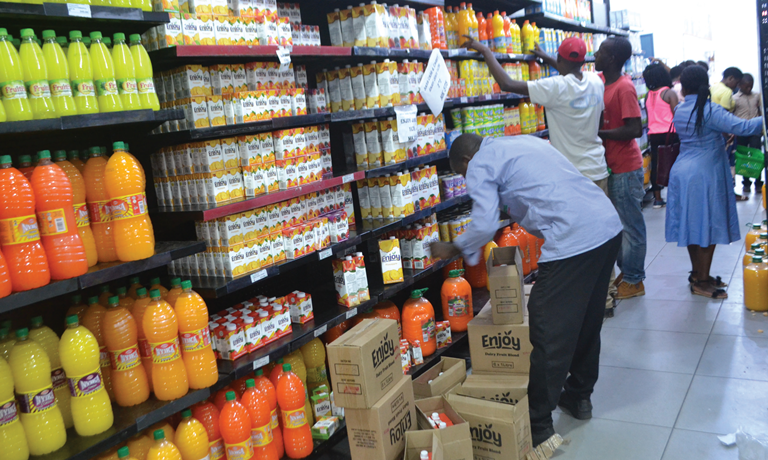Rising cost of living hits consumers hard
Rising prices of goods and services continue to hit consumers hard.
The situation is being compounded by people’s dwindling incomes and job losses, occasioned by the negative impact of the Covid-19 pandemic which has disrupted people’s livelihoods.

As Consumers Association of Malawi (Cama) executive director John Kapito observed in a recent interview, the current market prices of goods and services are beyond the reach of a majority of Malawians, 52 percent of whom live in abject poverty, according tot he National Statistical Office.
He says a research Cama conducted recently showed that prices of goods and services in Malawi have gone up by an average of 70 percent, hitting hard consumers who are already in a desperate situation.
Kapito says: “It is a fact that most consumers are unemployed and do not have access to incomes.Some have been retrenched as a result of Covid-19 and other market failures.
“It is, therefore, important that consumers refrain from engaging in unnecessary purchases at a time when there is no hope that prices will go down.”
In their joint assessment of the impact of Covid-19 on employment in Malawi, Employers Consultative Association of Malawi and the International Labour Organisation said Covid-19 has affected between 273 712 and 680 496 current and future jobs, translating into a three to seven percent loss of jobs that would have been available had the crisis not befallen.
The projections show that the Covid-19 crisis costs workers a minimum of K84.6 billion ($112.8 million) in monthly earnings and up to K129.21 billion ($172.28 million).
In per worker terms, the projections showed that the average worker is losing between K11 853 ($16.07) and K18 096 ($24.54) of labour income per month against a baseline monthly income of K104 870 ($142.2) that would have been earned had there been no Covid-19.
On the other hand, the typical worker in the informal sector, which constitutes more than 88 percent of the total labour force in the country, has seen their earnings go down to below K16 152 ($21.9).
Eunice Ngulube, a casual labourer is going a tought time.
Due to the economic hardships that the cleaning company she was working at was facing, she, and 13 others lost their jobs in August last year.
Left with a daughter to take care of and bills to pay, she resorted to selling second-hand clothes at Chirimba Market in Blantyre.
“We are barely surviving. Because peoples incomes have dwindled, buying clothes is the least of priorities for consumers.
“I make an average of K5 000 per day but this has to be used to buy food, pay market fees, upkeep and rentals.”
Meanwhile, the cost of living has been on the rise.
According to World Food Programme, as of October 2021, the minimum amount required to maintain existence and cover life-saving needs of households has increased five percent in the urban areas.
The survival minimum expenditure basket, which could involve the deprivation of certain human rights, increased from K63 355 to K66 529 per month, translating to an additional K3 174 per month for a household to meet its basic survival needs between September and October 2021.
This is against a minimum wage of K50 000.
Center for Social Concern (CfSC) economic governance programme officer Bernard Mphepo observed that the level of income for an average Malawian is below minimum requirements for the cost of food items and cost of living—the cost of maintaining a certain standard of living.
According to CfSC, a family of six in an urban setting required K221 543 in November 2021, a 11 percent increase year-on-year when compared to the K198 917 recorded during the same period the previous year and a 6.8 percent rise month-on-month when compared to K207 334 in October 2021.
Mphepo says: “The increase in cost of living, which has been worsened by the Covid-19 situation, is impacting the living standards of Malawians yet most Malawians cannot afford basic necessities such as food, education and health.
“While the minimum wage was raised to the current K50 000, which is commendable, some workers have been pushed out of employment as some employers cannot manage to pay their workers.”
Economists also fear that the rising fuel and electricity tariffs last year could worsen the economic situation in view of the escalating prices, adding that this could worsen the inflation outturn going forward.
In November last year, Reserve Bank of Malawi (RBM) revised upwards the 2021 and 2022 inflation rate projection on account of rising fuel prices and global supply chain disruptions.
In a statement on the fourth 2021 Monetary Policy Committee meeting signed by RBM Governor Wilson Banda, the central bank revised its 2021 inflation projection by 0.3 percentage points to an average of 9.1 percent.
Meanwhile, Malawi’s year-on-year headline inflation rate for November 2021 hit double digit, rising by 1.3 percentage points to 11.1 percent, triggered by a rise in food and non-food inflation.
Considering the more competing needs in the budget with a thin resource envelope, Minister of Finance Felix Mlusu called for patience as the country is going through turbulent economic times. He assured that government is working is workig on a number of strategies to boost the fragile economy.





